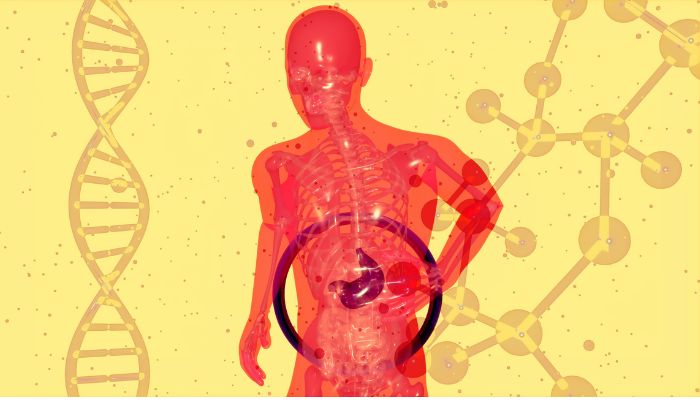|
Study probes autoimmunity link between SSc and primary biliary cholangitis by Andrea Lobo, PhD Systemic sclerosis (SSc) patients with primary biliary cholangitis (PBC), a disease that causes inflammation and scarring of the liver bile ducts, have milder symptoms that rarely lead to major complications, compared to patients with SSc alone. A study with that finding also determined SSc-only patients had a higher incidence of heart and pulmonary diseases at follow-up, as well as new digital ulcers, than those with SSc and PBC. Autoimmunity may be a link between SSc and PBC, and patients with both conditions “may be considered a real crossroad of polyautoimmunity that seem to alleviate the SSc phenotype [characteristics],” the researchers wrote. The study, “Systemic sclerosis and primary biliary cholangitis: Longitudinal data to determine the outcomes,” was published in the Journal of Scleroderma and Related Disorders. SSc is caused by activation of the immune system, leading to inflammation and accumulation of scar tissue (fibrosis) in the skin and internal organs. Also called scleroderma, SSc has been associated with other autoimmune diseases, such as PBC. PBC-specific autoantibodies — meaning those attacking the body’s own tissues — have been associated with higher mortality. The prevalence of PBC in SSc patients is estimated to be 2-3% higher than in the general population. But PBC-specific autoantibodies are even more frequent. The condition is more frequent in people with limited SSc, characterized by skin symptoms in the face, arms, hands, and fingers, and has been suggested to identify SSc patients with milder body-wide disease. To describe the clinical characteristics of people with PBC and SSc, an international team of researchers performed a multicenter study in 20 locations from the European Scleroderma Trials and Research Group (EUSTAR) network.
It included 276 participants: 115 with PBC-SSc and 161 SSc controls without disease in the liver and bile ducts. Mean age at diagnosis was 54.5 years in the PBC-SSc group and 52.7 in the SSc-only group. Patients were followed for about 10 years. At baseline (study start), there were no significant differences regarding lung involvement between the two groups. Patients with PBC-SSc had significantly higher pulmonary arterial pressure (33 vs. 27.7 millimeters of mercury, or mmHg) than those without PBC, but the two groups did not differ in the prevalence of pulmonary arterial hypertension. A greater proportion of participants with PBC-SSc had no history of digital ulcers (78.9% vs. 66% of those in the SSc-only group). The milder vascular involvement was confirmed at follow-up, with a significantly higher number of patients who never experienced digital ulcers observed among those with PBC-SSc (77.2% vs. 58%). In agreement, SSc-only patients experienced more new digital ulcers from baseline to the last follow-up than PBC-SSc patients (30.1% vs. 15.6%). Anti-mitochondrial antibodies were the most frequent PBC-specific antibody in the PBS-SSc group (87.6% of the patients), followed by the antinuclear antibodies anti-sp100 (15.3%) and anti-gp210 (13.6%). Also, more patients with PBC-SSc had other autoimmune diseases affecting a specfic organ. Tracking liver enzymes The levels of liver enzymes were significantly higher in PBC-SSc patients at baseline, which is indicative of liver disease, although these levels generally normalized during follow-up. Among 18 patients with signs of inflammation of bile ducts, one required a liver transplant at follow-up. The study revealed that a higher percentage of SSc-only patients had disease-related complications during follow-up, including pulmonary hypertension and heart conduction block — a problem with the electrical system that controls the heart’s rate and rhythm. Eight participants died during the study — seven in the PBC-SSc group and one in the SSc-only group. Three patients with PBC-SSc died for reasons other than SSc, and for two the association with the disease was not confirmed. According to the researchers, the data overall suggest that SSc patients might have particular clinical manifestations when the disease is associated with other autoimmune conditions. “This should be known by the clinicians and contribute to the risk-stratification of these patients,” the researchers wrote. “At the individual level, longitudinal careful follow-up is still mandatory because although less common than in the whole SSc and PBC populations, some complications or progressions may be unfortunately responsible of patient’s exitus [death],” they added. Comments are closed.
|
AuthorScleroderma Queensland Support Group Archives
July 2024
Categories
All
|
Scleroderma Association of Queensland
©Scleroderma Association of Queensland. All rights reserved. Website by Grey and Grey.

